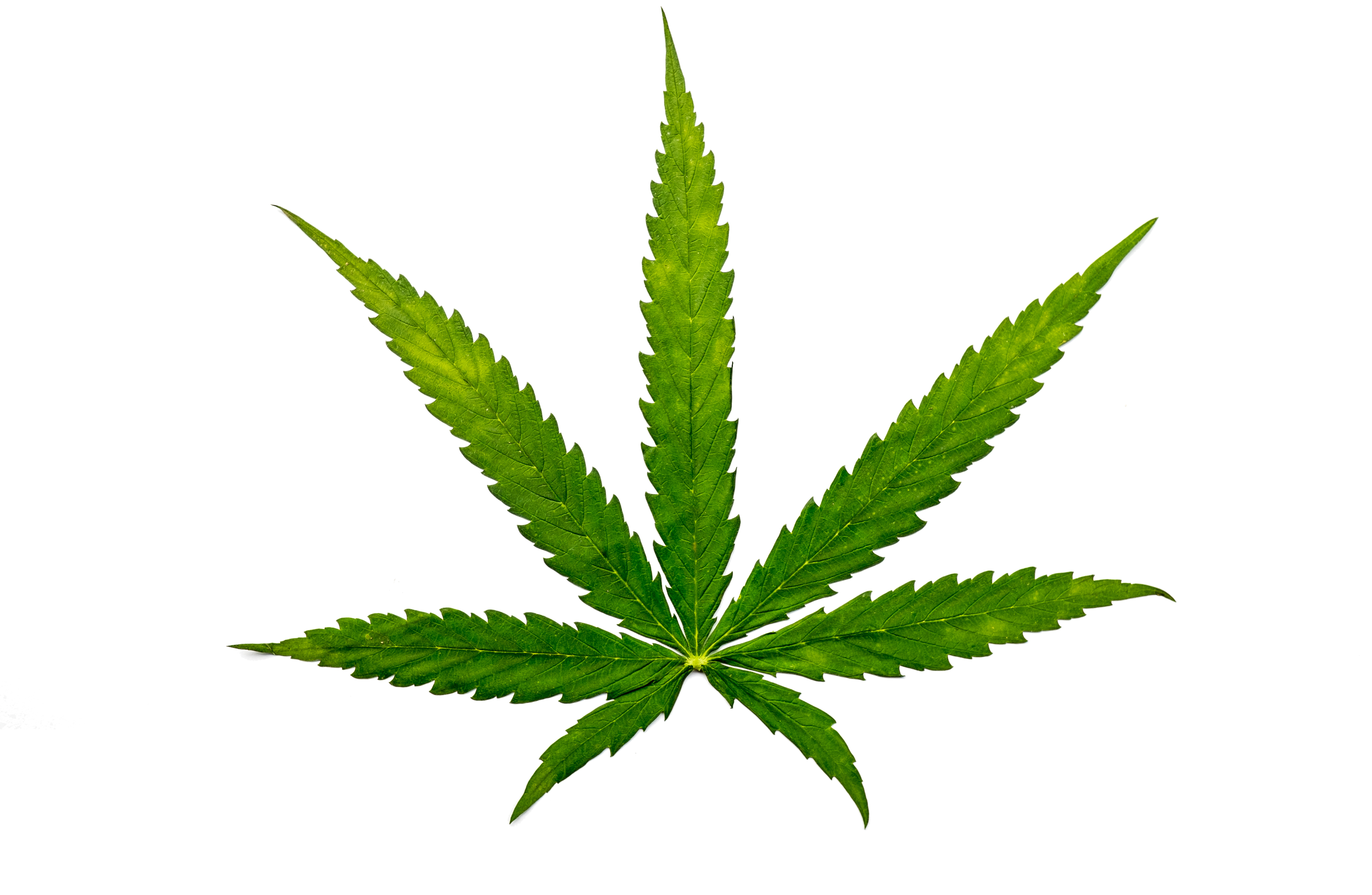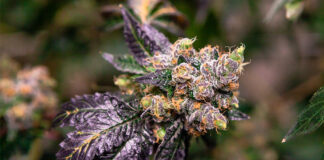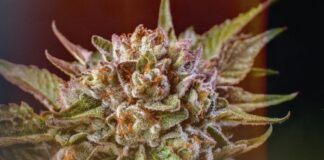Terra Luna Farms grew almost 50 different strains on two outdoor parcels licensed for up to an acre of canopy in 2018.
Harvest yield totaled around 1,600 dried, cured pounds with an estimated wholesale value of around $2.8 million.
Terra Luna battled a late splash of rain that threatened mold in October. Biodynamic farmers cannot combat mold or mildew with powerful, synthetic chemistry.
“There’s no silver bullets,” said Mike Bensinger, a longtime biodynamic evangelist from the wine industry. “If you have a problem you’re already fucked. It’s a super-anticipative type of farming.”
 (Jason Henry for Leafly)
(Jason Henry for Leafly)
SPARC’s harvest reaches consumers as high-quality top-shelf buds, as well as cannabis oil that goes into vape pens and edibles.
Terra Luna farms is situated in the Moon Mountain region of Sonoma County. The growing location and inputs influence the final product, they said.
“Both flowers flavors and effects are enunciated by the unique climate of the Moon Mountain AVA which benefits from a warmer climate just above the fogline and a consistent breeze with winds from both the Pacific Ocean and San Pablo Bay,” SPARC states.
“The finish has been great,” said Terra Luna owner Ereneta.
“If anything it’s been a little scary. We’ve had deja vu with several red flag warnings up until today about windy dry weather. We have a little PTSD.”
SPARC founder Erich Pearson has survived not only the brutal transition from medical cannabis to recreational in the brutal market of San Francisco. Wildfire tested his renegade spirit in 2017.
 (Courtesy SPARC)
(Courtesy SPARC)
Above, Pearson amid the ruin of the Nun’s Fire. The fires interrupted a multi-year plan to get the farm Demeter-certified.
 (Courtesy SPARC)
(Courtesy SPARC)
Biodynamic evangelist Mike Bensinger, left, helps remediate Terra Luna farms after the Nuns Fire.
“It’s really important for plants to have some relationship to humans,” said Bensinger, a local wine celebrity and biodynamic grower.
 (Jason Henry for Leafly)
(Jason Henry for Leafly)
A tag denoting strain type sticks out of the soil next to a cannabis plant.
Biodynamic farming and demeter-certification is all about the soil. The unique, local soil gives a plant its terroir—or unique smell, taste and effect.
Terra Luna’s soil needed three year’s work to get demeter certified. Conventional farmland cannot qualify for five years unless they remediate.
Terra Luna grew in fabric pots with holes to allow the roots to tap into the ground soil.
Looking For Fresh Cannabis? Try Leafly Finder
 (Courtesy SPARC)
(Courtesy SPARC)
After the fires, SPARC planted cover crops included purple vetch, fava beans and oat hay helped fix the nutrient nitrogen. Those crops got mulched back into the soil. “Biodynamic cannabis farming, with its emphasis on good health, natural inputs and cycles, and honoring the Earth, is the best way to grow this healing plant.”
“It’s not easy to grow this way, but it is simple, because it most closely mimics what nature would do itself,” Pearson said. “The result is a clean, flavorful cannabis with extraordinary powers. I’m delighted to be able to offer these two new strains to our patients and adult consumers alike.”
 (Courtesy SPARC)
(Courtesy SPARC)
All-natural compost included worm castings, manure, all organic OMRI-certified inputs. Going biodynamic means sourcing all farm inputs from the farm itself. Terra Luna also fertilized with bat guano from nearby deposits.
SPARC worked to pioneer biodynamic certification for cannabis since 2015.
Finishing Strong
 (Jason Henry for Leafly)
(Jason Henry for Leafly)
With trichomes ripe and mature, farm workers chop cannabis stalks and move them on trays into a processing building. Strains of 2018 included Cookies, Tangie, Bubba Kush, and Remedy.
 (Jason Henry for Leafly)
(Jason Henry for Leafly)
Workers process the cannabis—removing debris and fan leaf, spreading out buds for drying. The fall’s full-sun harvest creates a seasonal spike in demand for labor. Processing wages are declining while regulatory costs have kicked in for the first time.
 (Jason Henry for Leafly)
(Jason Henry for Leafly)
Hundreds of pounds of cannabis dries in a large drying room. The buds get laid flat in single layer per tray. The stackable trays go on rolling dollies. Buds dry for five to seven days in a cold, dark room humming with fans.
Later they go to move on to a stage called ‘curing’. During curing, buds get trimmed and polished.
 (Jason Henry for Leafly)
(Jason Henry for Leafly)
A cannabis bud dries in the drying room. Fresh on shelves at SPARC’s four Bay Area dispensaries this fall, Biodynamic Black Light offers potent, high-THC indica effects. The musky, floral cross of Black Domina and Northern Lights #1 can help with relaxation and sleep.
 (Jason Henry for Leafly)
(Jason Henry for Leafly)
A top-shelf cannabis strain sits in the gloved hand of a processor. Strains of 2018 include Biodynamic Purple Punch is an indica flower with a sweet berry-like flavor and hails from a beloved cross between Larry OG and Grand Daddy Purple which produces a sedating feeling perfect for winding down the day.
Looking For Fresh Cannabis? Try Leafly Finder
Terra Luna’s official demeter-certification coincided with its harvest hitting shelves.
 (Courtesy SPARC)
(Courtesy SPARC)















